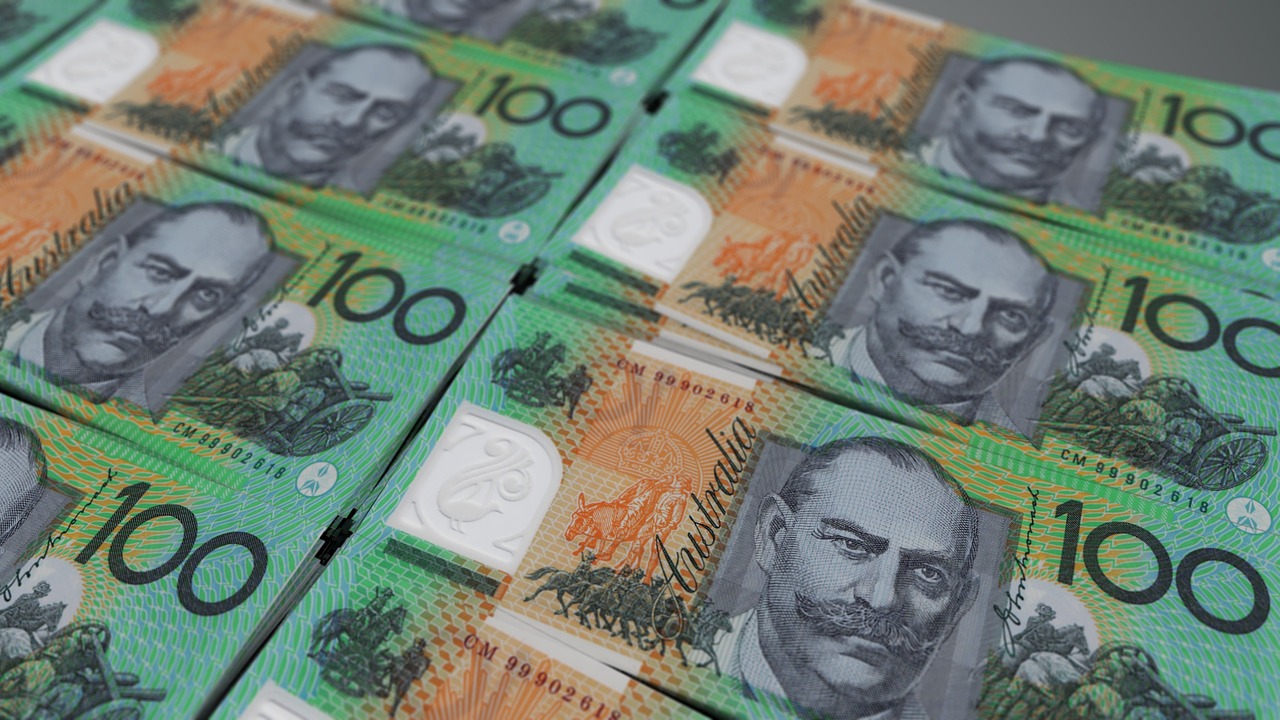The Aussie Dollar to US Dollar fell sharply to 0.7238 levels on Friday, April 22, 2022. It saw a single-day fall of 1.9% on Friday, with a sharp downturn from 0.7380 to 0.7238 levels.

Aussie Dollar to US Dollar Breaks 200 DMA Levels at 0.7293
The AUD/USD broke crucial support at the 200 DMA at 0.7293. A further move downwards will be negative for the Australian Dollar. The Aussie Dollar to US Dollar gave up support levels at 0.73 levels. The currency pair surged higher past the 200 DMA in March but could not sustain its positive momentum.
After a show of strength, the Australian Dollar fell sharply on the last day of the week, breaking below the 0.73 level. The elections in May will play a significant role in the Aussie currency movement.
The Australian Dollar shows a tendency to move with the commodity markets. Commodity prices are trending higher, and the AU to US Dollar may move back above support levels, predict analysts. High inflation has brought a surge in commodity prices, which is good for the Aussie Dollar to US Dollar.
The weakening Japanese Yen keeps the AUD/JPY higher.
Employment News in Australia
The unemployment rate in Australia is at 4.0%, higher than the forecast at 3.9%. The unemployment rate is at a 14-year low. The Australian Bureau of Statistics (ABS) claims it is the lowest rate since 2008. With increasing employment opportunities and better economic activities, the Aussie Dollar to US Dollar was above the 200 DMA in March.
The employment change is at 17.9k, while the forecast was at 30k. The job market indicates consumer spending and economic activities are improving in the country. Full-time job opportunities have gone up, but part-time job positions are slow. The job market shows growth in the forthcoming month too.
The Omicron variant of the virus brought a drop in the labor market in January. People were unable to work as people fell sick. But with health improvement, the job market improved. The number of employed people has gone up and working hours have rebounded in February.
The Reserve Bank of Australia may hike rates as the economy shows improvement. The RBA predicts a further improvement in the job market in the coming months. The unemployment rate may drop below 4%, states the RBA.
Federal Election on May 21
South Australia goes to the polls on Saturday for state elections.
Australian Prime Minister Scott Morrison announced the federal election date for May 21. The Labor Party has the policies to shape the future, says PM Morrison. Mr. Morrison is the first prime minister to serve a full term.
Australians will consider the leadership quality of PM Morrison in handling the covid pandemic. It will help in the election victory.
Inflation is high and the economy is slowing. High prices play a crucial role in household spending and consumer sentiment. It will impact election results. Unemployment rate has come down, and good economic recovery will be a positive factor for PM Morrison.
The RBA might increase rates once the federal elections take place next month to handle inflationary pressure.
US Dollar Moves Higher with Surging Treasury Yields
The Dollar Index trades strongly above the 101 mark, at levels last seen in March 2020. It is at triple digits as the greenback move to the pre-pandemic era.
The Fed intends to hike interest rates to curb inflation aggressively. Rate hikes may tackle inflation problems for the short term, say officials. Inflation is at a 4-decade high in the US. The Fed’s monetary policy tightening is negative for the Australian Dollar. The Ukraine war has brought a surge in commodity prices. Crude oil prices are at $108 per barrel as the Russian exports of crude oil have come down.
The US Treasury yields saw a strong surge. The surge in Treasury yield prices may have led to the downturn in the AUD/USD currency pair. But, treasury yields brought a fall in prices of precious metals like gold and silver.
The job market in the US shows a strong recovery. Despite the Russia-Ukraine war, people are returning to normal life, as businesses are reopening after the covid pandemic.
There is a global slowdown, with most currencies showing a downward slope. High inflation in leading countries like the US, the UK, and the EU has induced fear in investors, as commodity prices are surging higher.
AUD/JPY Moves Higher
The Japanese Yen saw a sharp drop in prices with ultra-loose monetary prices.
The AUD/JPY is at 93.09. It is trading at levels last seen in 2015. The weakness in the Japanese Yen keeps the AUD/JPY rates higher. It maintains a bullish uptrend.
It has resistance at the 97.00 levels, which are also the May 2015 highs.
Surging covid cases has brought in lockdown restrictions in major cities in China, which is another reason for the weakness in the Australian Dollar as China has close trade relationships with Australia.